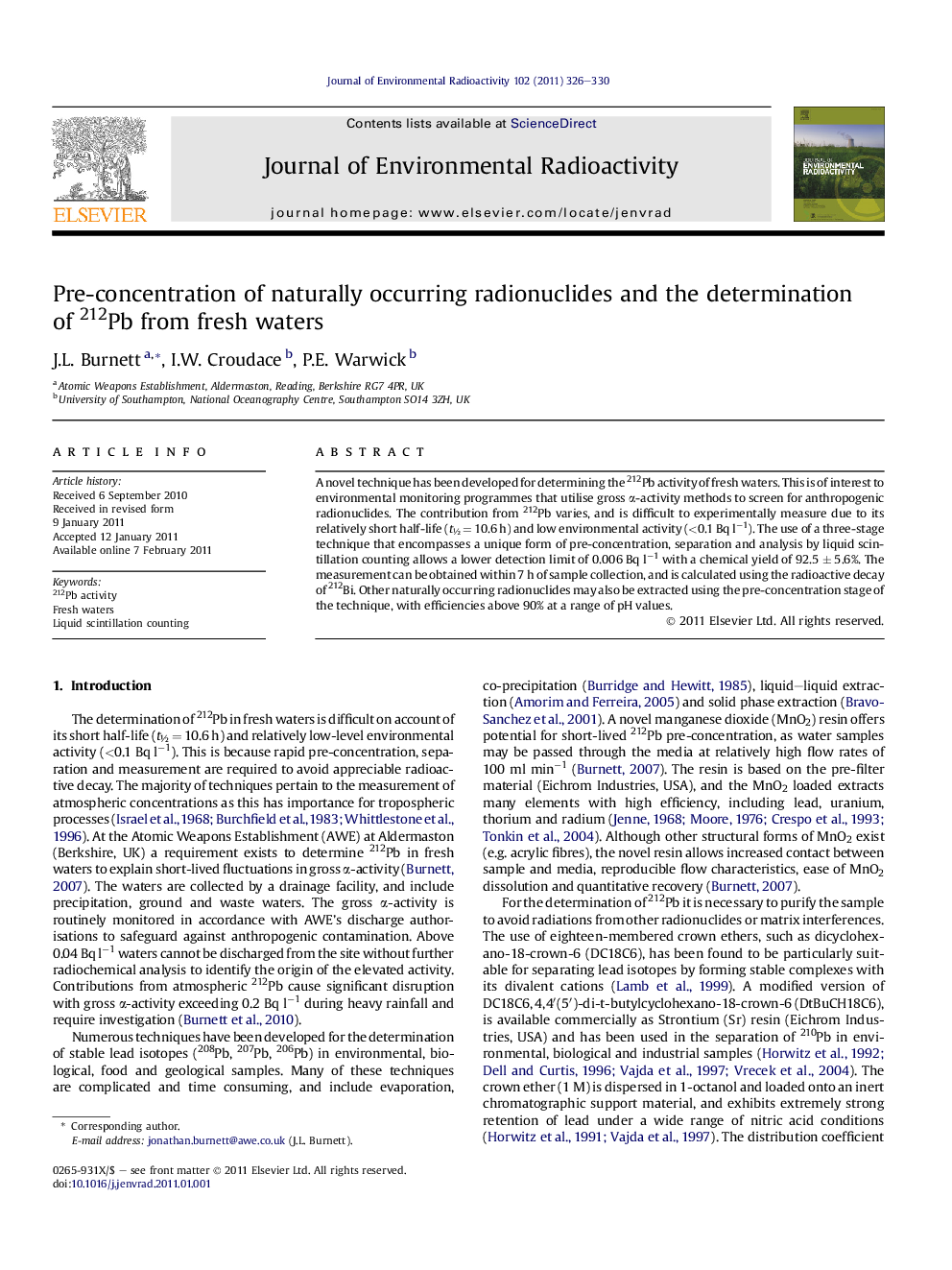| Article ID | Journal | Published Year | Pages | File Type |
|---|---|---|---|---|
| 1738756 | Journal of Environmental Radioactivity | 2011 | 5 Pages |
A novel technique has been developed for determining the 212Pb activity of fresh waters. This is of interest to environmental monitoring programmes that utilise gross α-activity methods to screen for anthropogenic radionuclides. The contribution from 212Pb varies, and is difficult to experimentally measure due to its relatively short half-life (t½ = 10.6 h) and low environmental activity (<0.1 Bq l−1). The use of a three-stage technique that encompasses a unique form of pre-concentration, separation and analysis by liquid scintillation counting allows a lower detection limit of 0.006 Bq l−1 with a chemical yield of 92.5 ± 5.6%. The measurement can be obtained within 7 h of sample collection, and is calculated using the radioactive decay of 212Bi. Other naturally occurring radionuclides may also be extracted using the pre-concentration stage of the technique, with efficiencies above 90% at a range of pH values.
► Novel 212Pb measurement in fresh waters. ► Radionuclide pre-concentration using manganese dioxide resin. ► Purification of lead isotopes by strontium resin. ► Low-level detection by liquid scintillation counting. ► Limit of detection of 0.006 Bq l−1.
